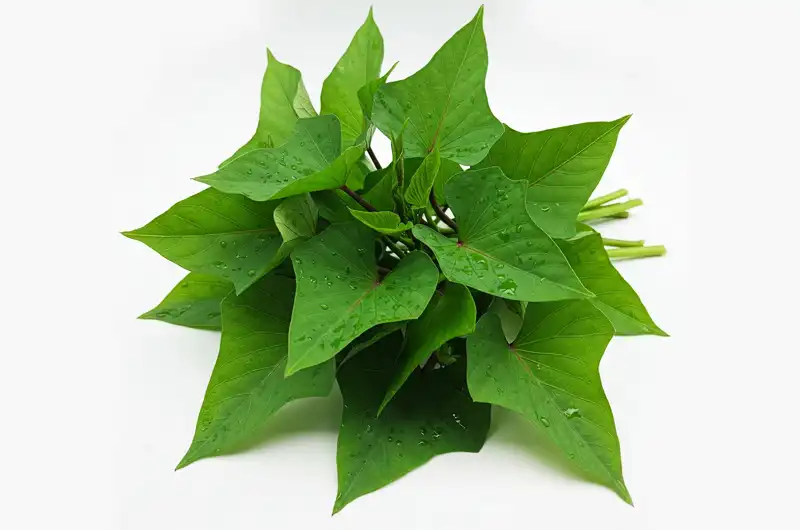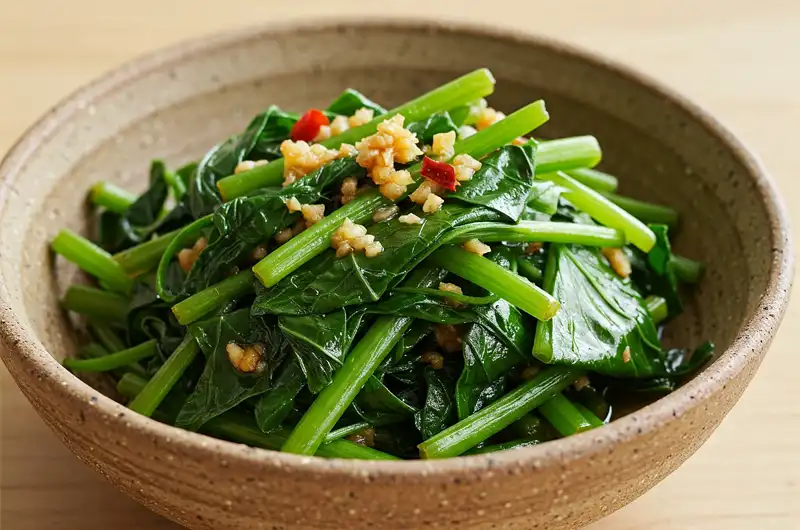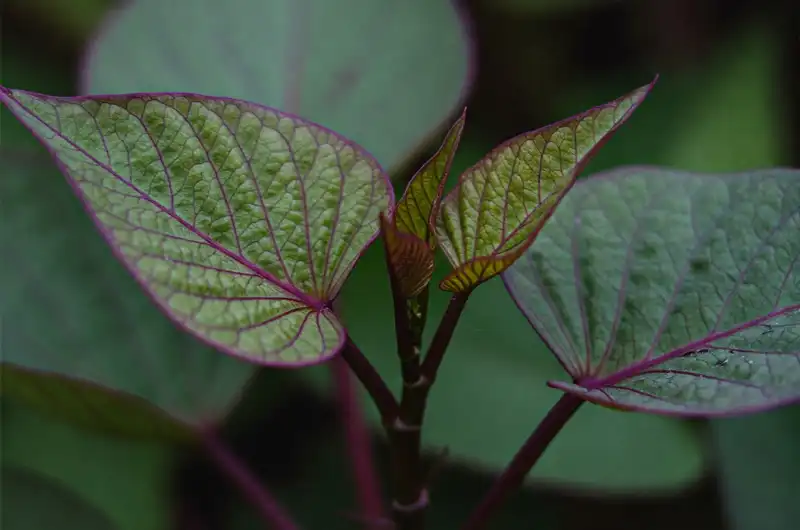While the sweet potato root is celebrated worldwide for its comforting sweetness and nutritional value, its leafy green tops are often overlooked. Yet, these vibrant leaves, a staple in many tropical cuisines, are not just edible – they are packed with nutrients and offer a surprising range of health benefits and culinary possibilities. Let’s delve into the world of sweet potato leaves and uncover why you shouldn’t discard these nutritious greens.
What Exactly Are Sweet Potato Leaves?
Sweet potato leaves, also known as camote tops in some regions, are the tender leaves and stems of the sweet potato plant (Ipomoea batatas). Unlike the leaves of regular potatoes (which belong to the nightshade family and are toxic), sweet potato leaves are perfectly safe and highly nutritious when consumed. They typically have heart-shaped or lobed leaves and can vary in color from deep green to purple, depending on the variety.

Unveiling the Nutritional Powerhouse: Sweet Potato Leaves Benefits
The primary reason to add sweet potato leaves to your diet is their exceptional nutritional profile. They stand out as a significant source of essential vitamins, minerals, and antioxidants.
Rich in Essential Vitamins and Minerals
This type of leaves are loaded with vital nutrients:
- Vitamin K: Crucial for blood clotting and bone health. A serving can provide a significant portion of your daily requirement.
- Vitamin A: Important for vision, immune function, and skin health. The leaves are a great source of beta-carotene, which the body converts to Vitamin A.
- Vitamin C: A powerful antioxidant that supports the immune system and collagen production.
- B Vitamins: Including Riboflavin (B2) and Niacin (B3), which help convert food into energy.
Essential Minerals:
- They provide good amounts of manganese, potassium, magnesium, iron, and calcium, supporting various bodily functions from nerve transmission to oxygen transport.
Dietary Fiber:
- Aids digestion, helps regulate blood sugar, and promotes satiety.
Powerful Antioxidant Properties
Beyond vitamins and minerals, sweet potato leaves are rich in polyphenols and other antioxidants. These compounds help protect your body’s cells from damage caused by free radicals, potentially reducing the risk of chronic diseases like heart disease and certain cancers.1 The antioxidant levels can sometimes even surpass those found in other leafy greens.
Potential Health Advantages Derived from Nutrients
Consuming sweet potato leaves regularly may contribute to several health benefits:
- Improved Eye Health: Due to the high Vitamin A content.
- Enhanced Immunity: Supported by Vitamins A and C.
- Better Bone Health: Thanks to Vitamin K and minerals like calcium and magnesium.
- Blood Sugar Regulation: The fiber and certain polyphenols may play a role in managing blood sugar levels.
- Anti-inflammatory Effects: Antioxidants help combat inflammation throughout the body.
- Support for Healthy Blood Pressure: Potassium content contributes to cardiovascular health.
Delicious Ways to Enjoy Sweet Potato Leaves: Culinary Uses
Wondering how to incorporate these greens into your meals? Sweet potato leaves have a mild, slightly earthy flavour, sometimes with a hint of bitterness (especially older leaves) that mellows upon cooking.
Simple Sautéed Greens
One of the easiest methods is to sauté them like spinach or kale.
- Wash the leaves and tender stems thoroughly.
- Heat oil in a pan, add garlic, onions, or chili for flavour.
- Add the sweet potato leaves and sauté until wilted and tender (usually just a few minutes).
- Season with salt, pepper, soy sauce, or fish sauce to taste.

Hearty Soups and Stews
Sweet potato leaves are a fantastic addition to soups and stews, adding nutrients and a pleasant green element. They are commonly used in Southeast Asian dishes like Filipino Sinigang or added to African groundnut stews. Simply stir them in during the last few minutes of cooking.

Creative Additions
- Salads: Very young, tender leaves can be used raw in salads.
- Steamed: Steam them lightly as a simple side dish.
- Smoothies: Blend a few leaves into your green smoothie for an extra nutrient kick.
- Stir-fries: Add them along with other vegetables in your favourite stir-fry recipes.
Beyond the Kitchen: Sweet Potato Leaves in the Food Industry
The potential of sweet potato leaves extends beyond home cooking:
Natural Food Colorant:
- Extracts from the leaves, especially purple varieties, can potentially be used as natural green or purplish food colorants.
Functional Food Ingredient:
- Due to their high antioxidant and nutrient content, extracts or powders from sweet potato leaves could be incorporated into health foods, supplements, or functional beverages. Research is ongoing in this area.
Lesser-Known Potential: Other Uses for Sweet Potato Leaves
This versatile plant part has other interesting applications:
Animal Feed Supplement:
- The leaves are a nutritious and readily available source of fodder for livestock, particularly in tropical agricultural systems.
Traditional Medicine:
- In some cultures, sweet potato leaves have been used traditionally for various ailments, although robust scientific validation for many of these uses is still needed.
How to Select and Store Sweet Potato Leaves
When buying or harvesting sweet potato leaves, look for vibrant, fresh-looking leaves without signs of yellowing, wilting, or significant pest damage. Choose younger leaves and tender stems for the best flavour and texture.

Store them as you would other leafy greens: wash and dry them gently, then place them in a plastic bag (perhaps with a paper towel to absorb excess moisture) in the refrigerator’s crisper drawer. Use them within a few days for optimal freshness.
Don’t Overlook This Green Gem
Sweet potato leaves are far more than just a byproduct of growing sweet potatoes. They are a nutritional powerhouse, offering significant health benefits, culinary versatility, and potential industrial applications. The next time you see sweet potatoes with their greens attached, or if you grow them yourself, remember the amazing benefits hidden in those leaves and give them a try!
Read More about Sweet Potato:
- Benefits of Sweet Potatoes : A Guide to Nutrition, Health, and Uses
- Sweet Potatoes: From Origin to Harvest and Care
Latest Posts:


